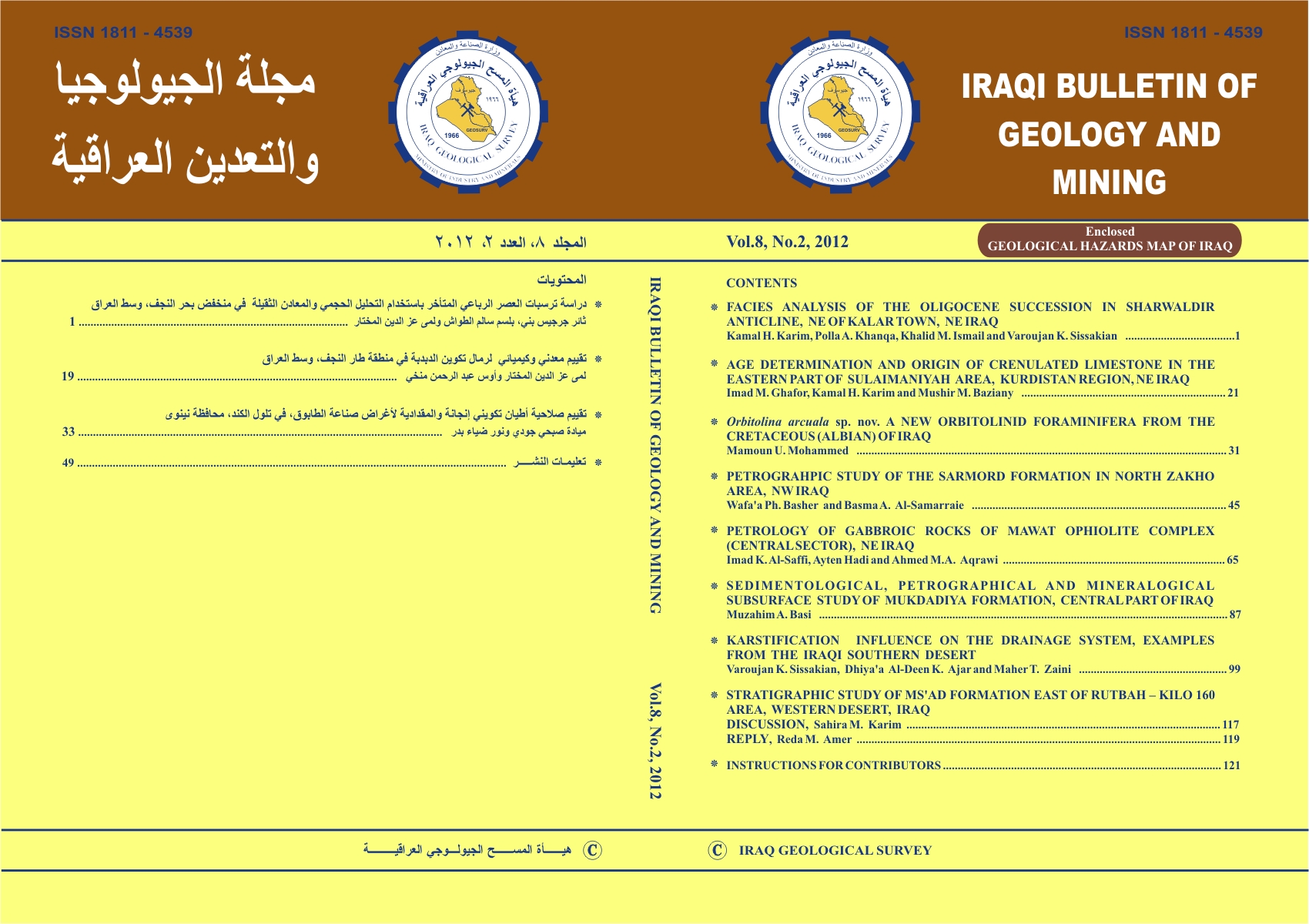Abstract
Sixty meters thick Oligocene carbonate succession crops out in the area southeast of Derbandi Khan town and northeast of Kalar town. The carbonate succession is exposed in the core of the NW – SE trending Sharwaldir anticline, which extends across the border into Iran. The recorded facies have stratigraphical and paleogeographical importance for understanding of the palaeogeography of NE Iraq; the facies are: Foraminiferal wackestone – Packstone, Bufflestone, Algal – Coral bindstone, Bioclast wackestone – Packstone and Grainstone microfacies. These facies indicated that the lower, middle and upper parts of the section are deposited in fore-reef, reef-crest and reef-back reef environment, respectively. They belong to Baba and Anah formations (lower and upper parts of the section, respectively) while the middle part is a transitional zone between the two formations. The chemistry of the carbonates showed them to be of good quality for Portland and white cement production.
Keywords
Bindstone
Bufflestone
Framestone
Microfacies
Wacstone
Abstract
إن سمك تكشفات تتابع الأوليغوسين الكلسية تصل إلى 60 متر في طية شروالدر التي تقع إلى الجنوب الغربي من مدينة دربنديخان (شمال شرق مدينة كلار). لم يدرس هذا التتابع الكلسي (سابقاً) سحنياً ولا رسوبياً. تمتد هذه الطية عبر الحدود الدولية بين إيران والعراق باتجاه شمال غرب – جنوب شرق، كطية قبابية الشكل. في هذه الدراسة، تم تسجيل عدة سحنات رسوبية وهياكل للمتحجرات ذات الأهمية البيئية والطباقية والجغرافية القديمة، التي لها أهمية كبيرة في فهم جيولوجية شمال شرق العراق. أهم السحنات المسجلة هي Foraminiferal Wackestone – Packstone، Coral bufflestone، Algal – Coral bindstone، Bioclast Wackestone – Packstone وGrainstone microfacies، حيث ترسب الجزء السفلي والوسطي والعلوي في بيئة لاغون مفتوحة وخلف حاجز ولب الحاجز، بالتوالي. استنتجت في هذه الدراسة إن الجزء السفلي والعلوي يعودان إلى تكويني بابا وعنه، على التوالي، بينما يعود الجزء الوسطي إلى نطاق انتقالي بين التكوينين. أظهرت التحاليل الكيميائية للصخور الكاربوناتية أنها صخور ملائمة لصناعة السمنت الپورتلاندي والأبيض.
